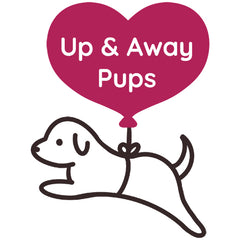Leash Training Tips for First-Time Puppy Owners
New puppy owners often feel anxious when their pets resist leashes. Positive reinforcement and gentle patience help puppies adjust and enjoy walks. Leash training improves safety during outings, encourages socialization, builds obedience, boosts confidence, and strengthens the bond between owner and pet. Using proper gear like comfortable leashes, harnesses, treats, and visibility aids ensures comfort and safety. Step-by-step training, from indoor practice to outdoor sessions, helps puppies adapt calmly. With consistency, rewards, and love, leash time becomes a positive, confident, and joyful experience for both puppy and owner.
It is common for new puppy owners to feel nervous when their new walking companions sulk. When a leash is clipped onto a puppy's collar for the first time, it is commonplace for them to resist, chew on, or tangle themselves in the leash's fabric. Positive reinforcement is an essential tool that, when applied gently, helps a puppy overcome its initial discomfort.
Learned from years of academic experience, gently providing positive training aids a puppy to walk easily. There is an added bonus of simply walking a dog. The time spent caressing is soothing for the dog, which, paired with proper leash training tips, fosters mutual loyalty.

Find Your Perfect Puppy Match Today!
Bring home more than just a pet — welcome endless love, wagging tails, and joyful memories. Our happy, healthy puppies are waiting to meet their forever families. Don’t miss your chance to find your new best friend!
Browse All Available PuppiesImportance of Leash Training
Ensures Safety Outdoors
Teaching the puppy to walk without losing control eliminates many potential hazards during outings. Restricted movement can prove advantageous for the puppy during street crossings or in the proximity of aggressive or excited dogs.
Improves Socialization Skills
Confident walkers are more likely to engage in positive encounters with people and other dogs. If you own a small dog breed like a Bichon Frise, then you are familiar with how they respond in a timely manner to training provided, since they are naturally playful and loving.
Strengthens Obedience Levels
Walking on a leash also helps build discipline, which is useful for other daily commands. The puppy focuses, listens, and learns to control her impulses when given the chance to explore new places with the owner.
Builds Puppy Confidence
Long leash walking allows the puppy to learn how to deal with various sights and sounds in a relaxed manner. Continued exposure enables faster adaptation to the outdoors.
Enhances the Bond Between the Owner and the Pet
Every outing serves to develop communication and trust. The enjoyment derived from performing the training together helps create a deep psychological bond.
Understanding Puppy Behavior
Every puppy is fascinated with the unknown. They interact with the world with their noses, paws, and mouths, which is why leashes appear strange at first. With time and gentle patience, they learn the leash means a fun time with a favorite person.
As stated by the American Kennel Club (AKC), the first few periods with a leash, positively associated with fun activities, are critical to socialization and compliance. Puppies with such training to walk positively will quickly learn the routine.
Different breeds learn in unique ways depending on their size, energy level, and personality. Recognizing those aspects will yield better outcomes. Having been equipped with small vs large breed care tips, you can stay aligned with the process with your puppy's comfort and natural character to get optimal outcomes.
Essential Gear Checklist
Choose a Comfortable Leash
A leash that is both lightweight and durable provides necessary control without causing unnecessary pain to the puppy. Fabrics such as padded leather or nylon are more comfortable and reduce the chances of irritation, which will make walks much more enjoyable.
Pick a Proper Harness
A harness that is fitted correctly provides more comfort than a collar. Small dog breeds, like Cavachon puppies, are more comfortable with soft chest harnesses that are lightweight and promote natural posture as well as gentle movement when walking.
Use a Treat Pouch
Storing trainable rewards in a pouch makes them conveniently accessible. Treating a puppy with a positive stimulus reinforces the action and behavior you want them to continue.
Add a Clicker Tool
Clickers have the ability to make noise, which can assist in signaling puppies. As with sounds, puppies will only respond to consistent sounds and will learn them quickly.
Ensure Visibility Gear
When walking puppies at nighttime, reflective collars or leashes help keep them safe. Visibility gear is vital for both the owner and the puppy when walking.
Step-by-Step Leash Training Process
Every puppy will go at their own pace for each task, and the outcome will be determined by the rest of the factors. For this case, the outcome will depend on the level of consistency and affection the trainer has.
Step 1: Leash Introduction
Let your puppy see and sniff the leash. Attach it lightly and indoors when they look interested. Offer small treats for calmness while moving around the room.
This builds confidence and trust. Acquaintance makes outdoor sessions easier and aids in practicing travel with puppy tips. It helps reinforce positive behavior when practicing travel behavior for puppies during new adventures and new environments.
Step 2: Early Acclimation
Let your puppy walk with the leash attached using the calm technique. Avoid sudden tugs, especially when you own a small dog breed like a Teacup Maltese, which may prefer shorter training durations. So prioritize comfort and small wins. Give calm, relaxed walking rewards often.
Slow adaptation increases enjoyment for leash training. It reduces the apprehension that comes with it. With confident repetition, leash training becomes fulfilling and teaches coordination.
Step 3: Indoor Practice Walks
Practice walking your dog with the leash in short sessions with little to no distractions. This helps the puppy focus completely. The American Veterinary Society of Animal Behavior (AVSAB) states that practicing any skill with repetition leads to an increase in the rate of learning the skill by 70 percent.
Speaking gently and having a positive outlook makes a difference. Slow, calm praise with rewards builds a positive attitude and steady progress in the puppy that will practice outdoor lessons.
Step 4: Outdoor Transition
Once your puppy is able to follow basic instructions indoors, you can head outdoors. Start with quiet, wide, and open areas to avoid any distractions. Allow space, but still keep a snug leash. Preparing the home for a new puppy by gradually introducing a similar environment builds flexibility.
Controlled, purposeful movement during these sessions fosters confidence from new sights and sounds. The positive experiences during this stage will lead to lasting ease when walking outdoors.
Step 5: Teaching Commands
Teach puppy commands like “sit,” “heel,” and “come” with a positive voice and treats. With time and practice together, it will become second nature. The aim here is to provide praise and rewards for these responses in order to standardize optimal recall.
These commands form the basis for new “adventures” and help teach the puppy structure. These commands help develop focus because a few tips for traveling with puppies make transitions in changed scenes, as well as on long-distance journeys, easier.
Step 6: Routine Consistency
Set a consistent time for training on the leads. Spend 10 minutes at different defined times of the day to help consolidate learning. A PetMD study on learning and training suggests that maintaining a consistent routine significantly improves the results of sessions.
Keep it fun, and always end on a positive note with praise. Routine fosters comprehension and transforms leash time into a fun, welcoming bonding experience that your puppy expects every day.
Step 7: Handling Distractions
Start with weak sounds, such as whispers or very distant background noise, and gradually increase the layers of distraction.
If your puppy does calm down, even slightly, reward him. Counterconditioning helps reduce fear reactions and develop flexibility. Dedicating time to calming and close control of the dog helps increase the level of attention and ease the dog's anxiety when going outdoors.
Common Leash Training Problems and Solutions
Pulling During Walks
Puppies pull due to excitement or curiosity. Do not move until the leash has slack. Provide rewards or other motivating consequences to keep them calm and teach them that pulling will get them nowhere.
Chewing the Leash
Puppies tend to chew the leash during the first stage of play. Divert their focus by equating chew with a toy or treat, and redirect their attention using toys or treats. Encourage calmness and reinforce stillness to increase focus during outdoor walking sessions, even when frustrated.
Not Willing to Move
Not being willing to move can result from over arousal or not knowing what to do next. For every little step a puppy takes, praise and encourage with a gentle voice to keep them motivated to move forward.
Ignoring Pull
Not being willing to move can result from over arousal or not knowing what to do next. For every little step a puppy takes, praise and encourage with a gentle voice to keep them motivated to keep moving forward.
Barking to Get Attention
Loud, over-the-top noise can be caused by excitement and unfamiliar surroundings. Soft, soothing words and a gentle approach can help bring the pup back.
Distraction Challenges
Loud noises or crowds can overwhelm your puppy. Start working with the puppy in a single private space, gradually introducing other environments, and using a step-wise approach so the puppy can become accustomed.
Conclusion
Each puppy is different and will learn through patience, repetition, and love. Losing sight of the main goal and taking time to celebrate each small win serves as motivation for both the trainer and the puppy. The gentle, steady approach will change nervous walks into walks of confidence. This calm, consistent practice makes restless walks pleasant. Unconditional love, along with the owner, is received when taking long walks with a well-trained puppy.
🐾 Ready to Meet Your New Best Friend?
From playful paws to gentle cuddles, your perfect puppy is waiting! Explore our wide selection of happy, healthy pups raised with love and care. Start your journey toward unconditional joy today.
View All Available Puppies

